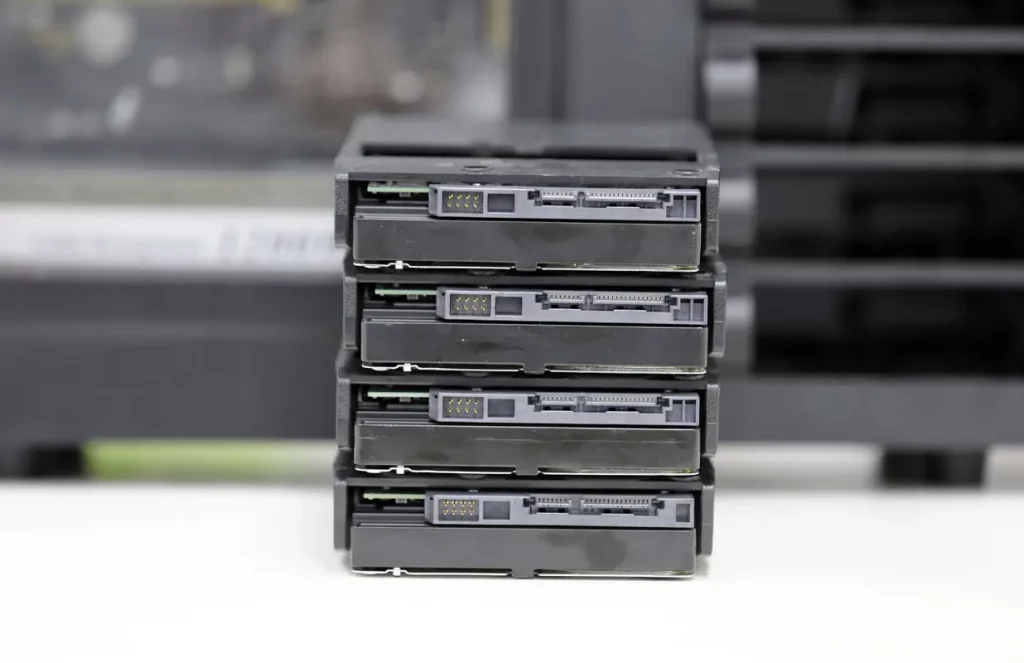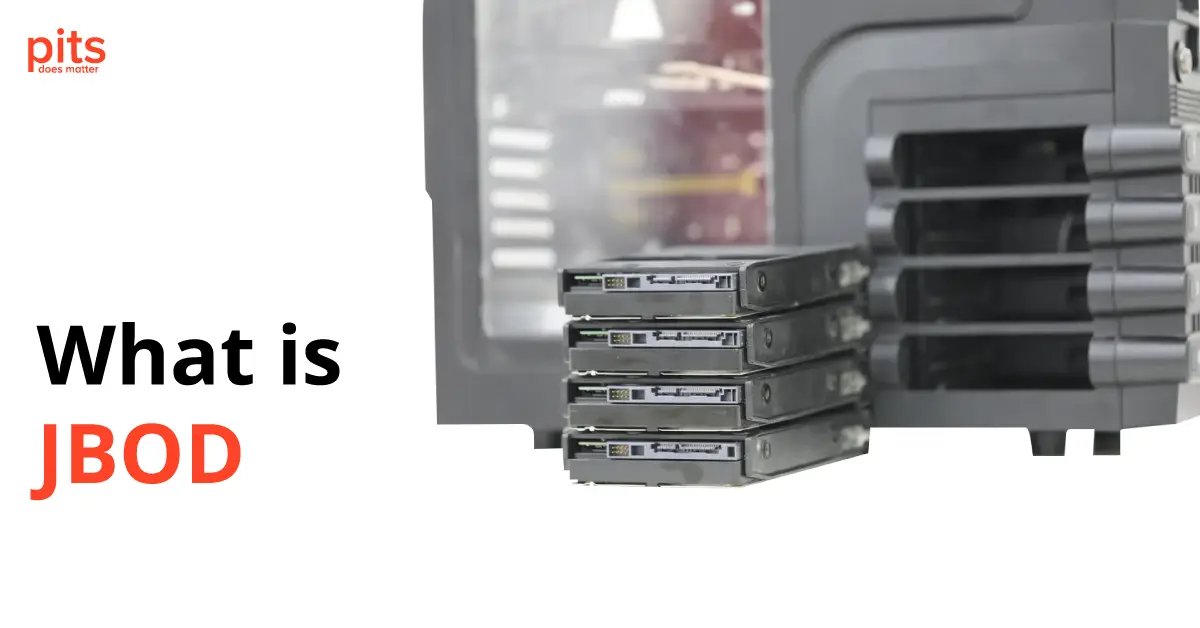In the world of data storage, there are various architectures and configurations available to meet different needs. One such option is JBOD, which stands for “Just a Bunch Of Disks.” JBOD is an alternative to traditional RAID (Redundant Array of Independent Disks) configurations and offers a cost-effective approach to local storage. In this blog post, we will delve into the concept of JBOD, explore its working mechanism, discuss its pros and cons, and touch upon data recovery in JBOD setups.
What is JBOD?
JBOD refers to a storage architecture where multiple disks are combined into a single logical unit without any redundancy or striping. Unlike RAID (Redundant Array of Independent Disks), which utilizes different configurations like RAID 0, RAID 1, or RAID 5, JBOD does not implement any specific data protection or mirroring techniques.
In JBOD, each disk in the configuration operates independently, appearing as individual drives to the operating system. Instead of presenting a unified storage pool, JBOD simply concatenates the storage capacity of all the disks into one larger virtual volume.
How Does JBOD Function?
JBOD operates by connecting a bunch of disks to a system using either an internal or external JBOD enclosure. These disks can be of varying sizes, makes, or models, making JBOD a flexible and cost-effective storage solution. The operating system recognizes each disk as a separate entity and assigns a drive letter to each.
When data is stored on a JBOD configuration, it is distributed across the available disks in a linear manner. As data is written to the logical volume, it fills up one disk before moving on to the next one. This process continues until all disks in the JBOD are utilized. Similarly, when data is read from the JBOD, the system accesses the disks sequentially to retrieve the required information.
Pros and Cons of JBOD
Pros of JBOD
- Cost-Effective: JBOD is a cost-effective storage solution as it utilizes existing disk drives without the need for expensive RAID arrays or additional hardware. This makes it an attractive option for individuals or organizations looking to expand their storage capacity on a limited budget.
- Flexibility: JBOD offers flexibility in terms of drive selection. It allows the use of disks with different sizes, speeds, or manufacturers. This means you can repurpose existing drives or add new ones as needed without being restricted to a specific disk configuration.
- Easy Integration: Implementing JBOD is relatively simple and straightforward. Since JBOD presents individual disks to the operating system, there is no complex setup or configuration required. It seamlessly integrates into existing systems without the need for specialized hardware or complex management software.

- Hot Swappability: One of the advantages of JBOD is its hot-swappability feature. With JBOD, you can add or remove individual disks while the system is running. This allows for easy expansion or replacement of drives without disrupting the operation of the overall storage system. It provides a level of flexibility and scalability that can be beneficial in certain scenarios.
- Data Recovery and Accessibility: In the event of a disk failure, JBOD allows for easier data recovery compared to some RAID configurations. Since data is not striped or distributed across multiple disks, the failure of a single disk does not impact the accessibility of the data on the other disks. This can simplify the process of recovering data from the functional disks.
Cons of JBOD:
- Lack of Data Redundancy: One of the significant disadvantages of JBOD is the absence of built-in data redundancy. Unlike RAID configurations that offer various levels of redundancy, JBOD does not provide any mirroring or parity protection. This means that if a disk fails, there is no mechanism in place to recover the lost data, resulting in potential data loss.
- Risk of Data Loss: Since JBOD lacks data redundancy, the failure of a single disk can lead to the loss of data stored on that specific disk. If data is not backed up or replicated elsewhere, there is a higher risk of permanent data loss. This can be a critical concern for individuals or organizations that store important or sensitive data.
- Limited Performance Optimization: JBOD does not stripe data across multiple disks like RAID 0 configurations. As a result, it does not provide the same level of performance benefits in terms of read and write speeds. The overall performance of JBOD is limited by the speed and capabilities of individual disks, which can lead to suboptimal performance in certain scenarios.
- Uneven Disk Usage: In JBOD, data is distributed linearly across the disks in the configuration. This can result in uneven disk usage, where some disks may fill up faster than others. Consequently, this can lead to inefficient utilization of storage capacity and potential performance bottlenecks if certain disks become heavily loaded.
- Limited Scalability and Load Balancing: JBOD does not offer the same scalability and load balancing capabilities as certain RAID configurations. Adding more disks to a JBOD configuration does not necessarily improve performance or capacity in a balanced manner. This can make it challenging to optimize and scale the storage system efficiently as data requirements increase over time.
JBOD Data Recovery with PITS
In the event of a disk failure in a JBOD configuration, data recovery can be challenging. Since JBOD lacks data redundancy, if a disk fails, the data stored on that particular disk may be lost or inaccessible. Data recovery in JBOD typically involves specialized tools and techniques to extract data from the remaining functional disks.
It is crucial to have a robust backup strategy in place when utilizing JBOD to mitigate the risk of data loss.
Regular backups ensure that critical data is protected and can be restored in case of disk failures or other storage issues. In the event of data loss in a JBOD configuration, it is essential to engage professional data recovery services. At PITS, we utilize cutting-edge data recovery techniques, to successfully retrieve data from compromised or unreachable JBOD systems.

With our extensive expertise, we have effectively dealt with a wide range of scenarios, including JBOD failures, multiple drive failures, and logical corruption incidents. Our priority is to ensure the safe and efficient recovery of your valuable data, minimizing both downtime and potential losses.
JBOD, or Just a Bunch Of Disks, is a storage architecture that combines multiple disks into a single logical volume. While JBOD offers cost-effectiveness and flexibility, it lacks data redundancy and the performance benefits of RAID configurations. Understanding the advantages and disadvantages of JBOD is essential to determine if it aligns with your specific storage requirements and risk tolerance. If you choose to implement JBOD, remember to establish a reliable backup strategy to safeguard your data.
Frequently Asked Questions
What is JBOD, and how does it differ from RAID?
JBOD is a storage architecture that combines multiple disks into a single logical unit without redundancy, whereas RAID is a configuration that implements different data protection techniques across multiple disks.
Can I mix and match different disk sizes and models in a JBOD configuration?
Yes, one of the advantages of JBOD is its flexibility. It allows for the use of disks with varying sizes, makes, or models, making it easier to repurpose existing drives or add new ones as needed.
Does JBOD provide data redundancy or fault tolerance?
No, JBOD lacks built-in data redundancy. If a disk fails in a JBOD configuration, there is no mechanism to recover the lost data, making data backup crucial to mitigate the risk of permanent data loss.
Can I add or remove disks from a JBOD configuration while the system is running?
Yes, JBOD supports hot swapping, allowing for the addition or removal of individual disks while the system is operational. This provides flexibility and scalability in managing storage capacity.
Is JBOD suitable for high-performance applications or environments that require fast read and write speeds?
JBOD’s performance is limited by the speed and capabilities of individual disks since it does not stripe data across multiple disks like RAID 0 configurations. As a result, JBOD may not be the best choice for applications with demanding performance requirements.
